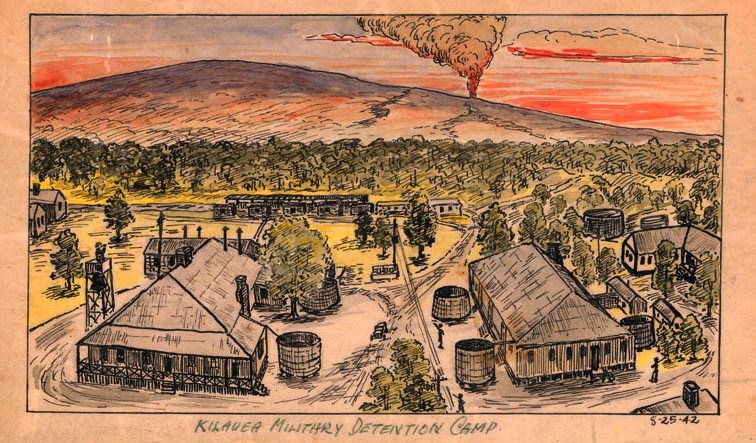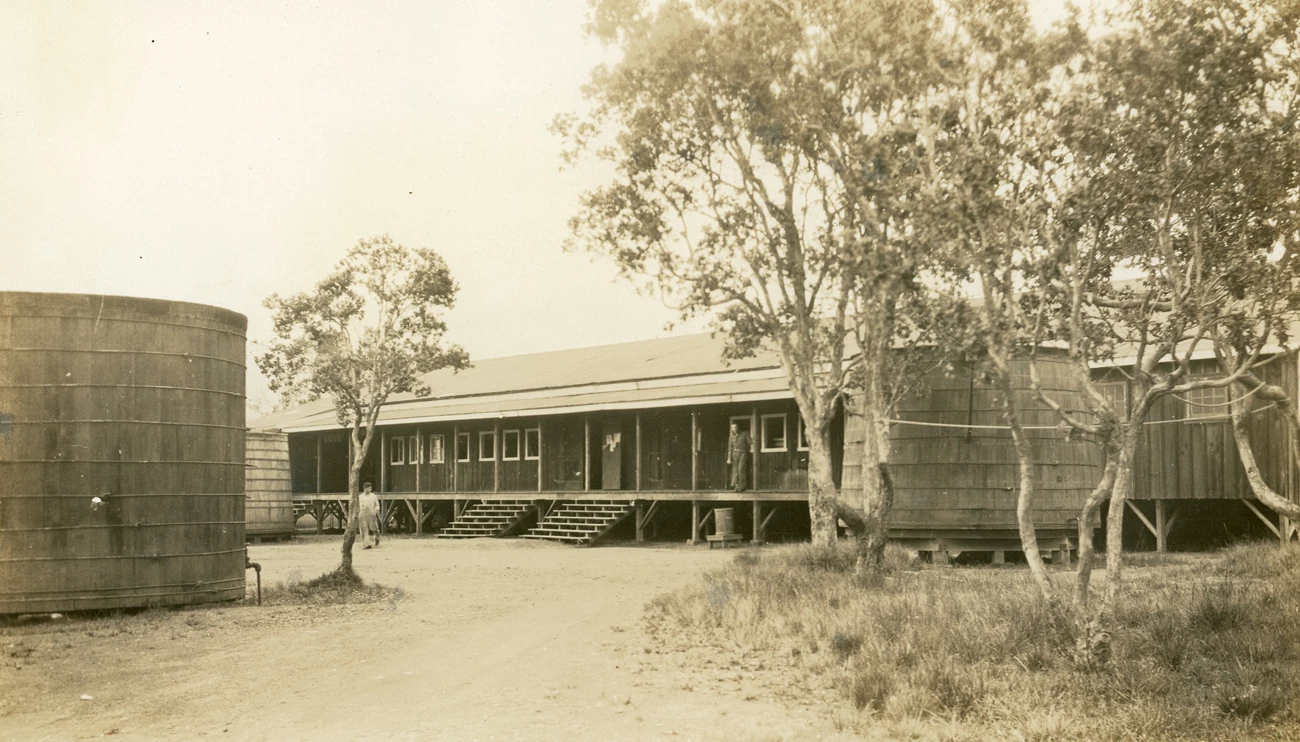|
More than 100 resident Japanese were interned at Kilauea Military Camp in World War II 
Image courtesy of Japanese American National Museum With the advent of war, staff at Hawaii National Park sprung into action to defend the park and support the military. With a ready infrastructure available, Major General Ralph Pennel (who assumed command of the District of Hawaii), set up a headquarters and command post in the park, and KMC became a center of activity. In 1941, it became an important staging ground for the war. From March to October 1942, KMC became the headquarters for the Twenty-seventh Division of the Army. The Federal government decided that in Hawai‘i the alien population would be controlled by the War Department. Since there were over 41,000 Japanese aliens, and over 115,000 Japanese citizens in the state of Hawai‘i, the War Department concluded it was impossible to place one tenth of the population of Hawai‘i in concentration camps. A December 4, 1941 memo from Special Agent R.L. Shivers to the Director of the FBI stated that there were 338 Japanese aliens and nine Japanese American citizens in Hawai‘i to be seized immediately. Of those, 82 were from the island of Hawai‘i. More were picked up, however, as the war went on and fear of sabotage continued. Against the desires of President Roosevelt, Assistant Secretary of War Mr. Bundy informed the FBI on December 22, 1941 that they were not going to relocate and intern all of the Japanese in the islands. Roosevelt was particularly concerned about the Japanese living on O‘ahu and Hawai‘i island, and suggested they at least be removed to one of the other islands in the Territory. But the War Department decided they would be selective in who they detained. Thus, they focused on businessmen, consular agents, Japanese language school teachers and principals, Buddhist and Shinto priests, and those who had Japanese military service, or who were deemed to have “extreme nationalistic sentiments” and were therefore considered a danger to American security. “They were asked to empty their pockets and ...checked. After examination, the eight ... were taken.... The men spoke little and anxiety for the future fate showed in their faces.”— Yoshio “George” Hoshida, Detainee at Kīlauea Military Camp
“Taken From Paradise Isle”, 2015 Many Hawai‘i Island detainees were taken to KMC, which was transformed overnight from an R&R facility to a prison. The first detainees arrived at KMC in the afternoon of December 7, 1941. While at KMC, detainees were confined to their barracks and were marched to the adjacent mess hall for meals. At approximately ten o’clock every day, for one hour, the detainees were allowed outside for exercise. While at KMC, they were surrounded by guards on foot, and on top of a guard tower. New detainees were brought in continuously. The FBI would come up to question those who were detained, and many were driven down to the federal building in Hilo for their board hearing. 
|
Last updated: June 23, 2022
